Have you ever wondered what exactly a dough hook is used for in baking? If you’re an avid baker or someone who wants to delve deeper into the world of baking, then understanding the purpose and benefits of a dough hook is essential. This crucial accessory for stand mixers can revolutionize your baking experience, ensuring that you achieve perfect dough every time.
- A dough hook is a stand mixer accessory used for kneading bread and pastry doughs.
- There are two types of dough hooks: C-shaped and spiral, each with its own unique characteristics.
- The C-shaped dough hook pushes the dough against the sides of the mixing bowl, while the spiral hook pushes it off the bottom.
- A dough hook helps develop gluten strands and makes kneading dough easier and faster.
- It can be used for making various doughs, including bread, pizza, and pasta dough.
Using a dough hook reduces the physical effort and time required for kneading, compared to kneading by hand. With a stand mixer and a dough hook, you can enjoy the benefits of effortless kneading, freeing up your time and energy for other aspects of the baking process. For best results, it is recommended to use speed 2 on your mixer, and the kneading time will vary depending on the specific recipe you are using.
Understanding the Function of a Dough Hook
A dough hook is a stand mixer accessory specifically designed for kneading bread and certain pastry doughs. It is a versatile tool that can transform the way you bake, making the dough-making process easier and more efficient.
When it comes to kneading dough, the dough hook takes center stage. It does the hard work for you, saving you time and effort. The primary function of a dough hook is to develop gluten strands in the dough, which gives bread its structure and texture.
There are two main types of dough hooks: the C-shaped and the spiral. The C-shaped dough hook comes with most KitchenAid tilt-head stand mixers and some bowl-lift models. It kneads the dough by pushing it against the sides of the mixing bowl, ensuring thorough mixing.
The spiral dough hook, on the other hand, is found in large-capacity bowl-lift models. It works by pushing the dough off the bottom of the bowl, ensuring the dough is properly mixed and kneaded. Both types of dough hooks are effective in their own way, and the choice between them depends on the type of stand mixer you have and the dough consistency you desire.
How Does the Dough Hook Make a Difference?
The dough hook is a game-changer for bakers. It replaces the need for hours of manual kneading, allowing you to achieve the same results with minimal effort. By using the dough hook, you can save time and energy while still producing high-quality dough.
The secret to using a dough hook effectively lies in the speed and duration of kneading. For most recipes, using speed 2 on your mixer is recommended. However, keep in mind that kneading time may vary depending on the specific recipe you are following. It’s essential to refer to your recipe to determine the appropriate kneading time for optimum results.
| Kneading Time | Recipe Type |
|---|---|
| 5-7 minutes | Basic white bread dough |
| 8-10 minutes | Whole wheat bread dough |
| 3-4 minutes | Pizza dough |
| 5-6 minutes | Pasta dough |
Remember, the dough hook is your ally in the kitchen. It helps you achieve consistent results and frees up your time to focus on other aspects of your baking. With the dough hook, creating delicious homemade bread, pizza dough, and other dough recipes has never been easier.
Different Types of Dough Hooks
There are two main types of dough hooks: C-shaped and spiral. These hooks are essential attachments for stand mixers, designed to make dough kneading a breeze. Let’s take a closer look at each type and their unique characteristics.
C-shaped Dough Hook
The C-shaped dough hook is included with all KitchenAid tilt-head stand mixers and some bowl-lift models. This hook is shaped like a letter “C” and is ideal for handling various dough consistencies. Its design allows it to push the dough against the sides of the mixing bowl, ensuring even kneading and optimal gluten development. The C-shaped hook is perfect for bread dough, pizza dough, and other recipes that require stretching and shaping.
Spiral Dough Hook
Found in large-capacity bowl-lift mixers, the spiral dough hook is specifically designed for handling larger quantities of dough. Its spiral shape enables it to push the dough off the bottom of the bowl, ensuring thorough mixing and kneading. This type of hook is commonly used for heavy-duty doughs, such as those used in commercial bakery settings. The spiral dough hook is a fantastic choice when making large batches of bread, pasta dough, or any other recipe that requires a substantial amount of dough.
“The dough hook is a game-changer when it comes to kneading dough. It simplifies the process, saves time, and ensures consistent results every time.” – Me
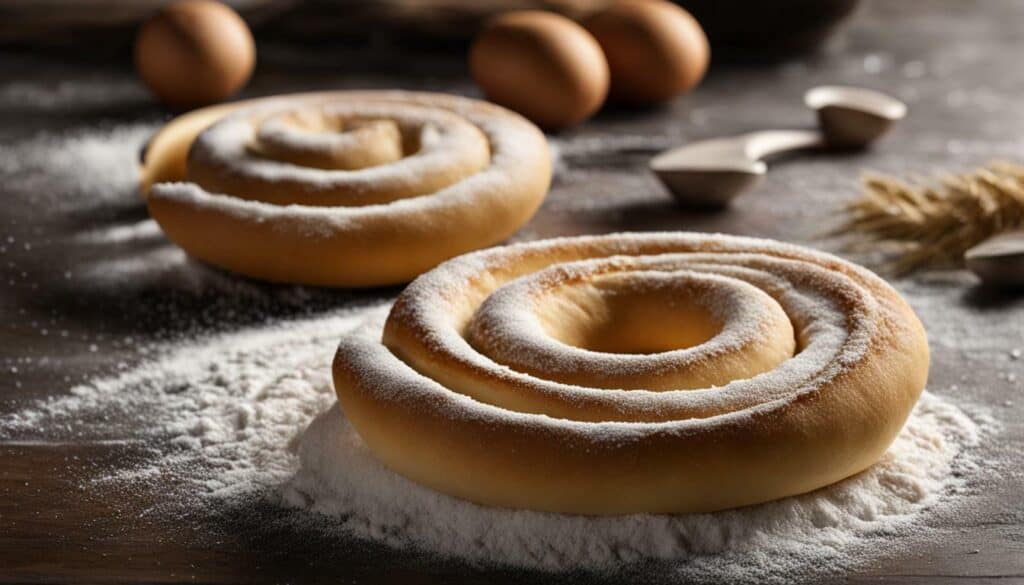
In conclusion, both the C-shaped and spiral dough hooks are valuable tools for any baker. They simplify the kneading process, reduce physical effort, and help achieve excellent dough consistency. Whether you’re making bread, pizza, or pasta dough, incorporating a dough hook into your baking routine will elevate your results to a whole new level.
| C-shaped Dough Hook | Spiral Dough Hook |
|---|---|
| Pushes dough against the sides of the bowl | Pushes dough off the bottom of the bowl |
| Optimal for various dough consistencies | Ideal for larger quantities of dough |
| Perfect for bread, pizza, and shaped doughs | Great for heavy-duty doughs and large batches |
How the C-Shaped Dough Hook Works
The C-shaped dough hook, found in KitchenAid tilt-head stand mixers and some bowl-lift models, kneads by pushing the dough against the sides of the mixing bowl. This unique design allows for thorough and even mixing, ensuring all ingredients are incorporated and gluten strands are developed.
As the stand mixer runs, the C-shaped dough hook rotates, pulling the dough from the bottom of the bowl and pushing it against the sides. This motion mimics the traditional hand-kneading technique, but with greater efficiency and consistency. The curved shape of the hook helps to reach every corner of the bowl, ensuring no pockets of flour or unmixed dough remain.
The C-shaped dough hook is particularly effective when working with doughs that require stretching and shaping, such as bread and pizza dough. It simplifies the kneading process, reducing the physical effort and time required compared to kneading by hand. With the dough hook, you can achieve perfectly developed dough every time, regardless of your experience level.
With its ease of use and exceptional performance, the C-shaped dough hook is a valuable tool for any baking enthusiast. Whether you’re making a simple loaf of bread or experimenting with intricate pastries, this accessory will become your go-to for achieving consistent and professional results.
Image: C-shaped dough hook in action
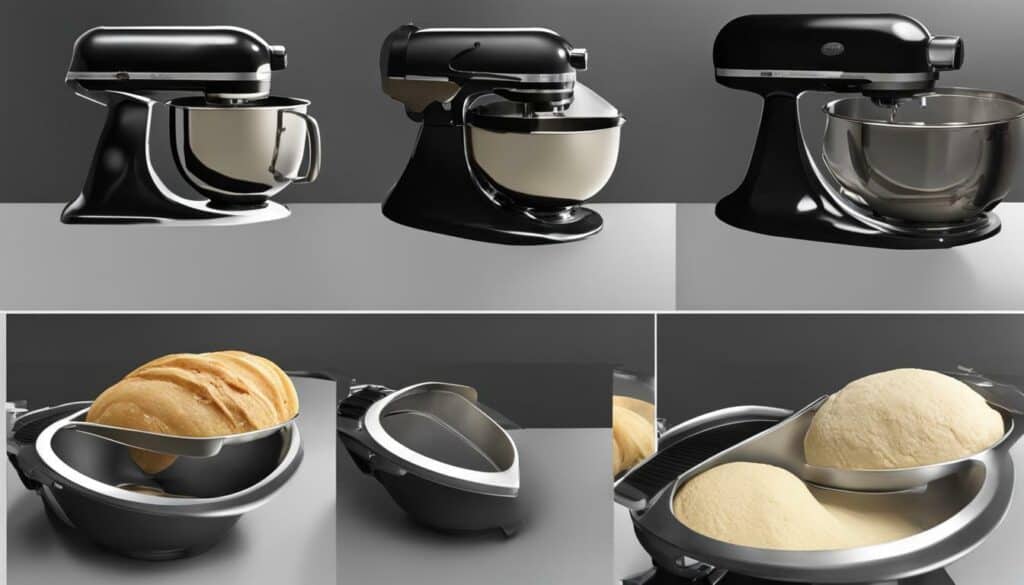
| Key Benefits of the C-Shaped Dough Hook |
|---|
| Efficient and thorough mixing of dough ingredients |
| Consistent and even gluten development |
| Saves time and physical effort compared to hand kneading |
| Allows for precise control over dough consistency |
| Compatible with a wide range of dough recipes |
Unleashing the Power of the Spiral Dough Hook
The spiral dough hook, unlike the C-shaped hook, pushes the dough off the bottom of the mixing bowl, aiding in gluten development. This unique design ensures that the dough is thoroughly kneaded, resulting in a better texture and structure for your baked goods.
One of the practical advantages of the spiral dough hook is its ability to handle large batches of dough. It is especially useful for making bread dough and other heavy, dense doughs. The spiral motion of the hook ensures that all the ingredients are evenly combined and kneaded, leaving you with a consistent dough every time.
When using a spiral dough hook, it is important to adjust the speed of your stand mixer accordingly. Start at a low speed, allowing the hook to gradually incorporate the ingredients. Then, increase the speed to ensure thorough kneading. The dough hook will save you time and effort, leaving you with more time to focus on other aspects of your baking process.
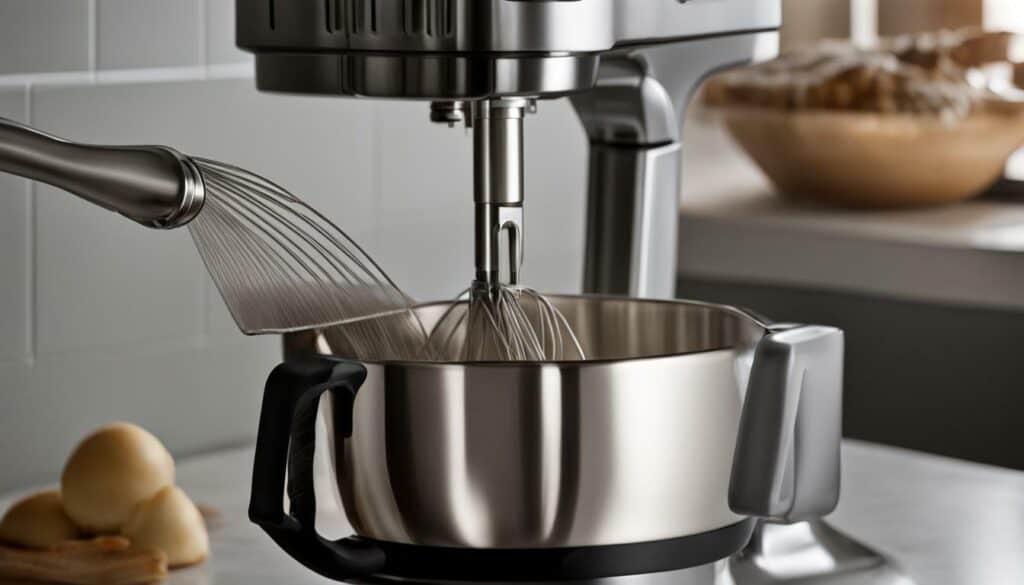
- Efficiently kneads large batches of dough
- Enhances gluten development for better texture
- Saves time and effort compared to kneading by hand
- Produces consistent results every time
Whether you are a professional baker or a home baker, the spiral dough hook is a valuable tool that can elevate your baking game. Say goodbye to tired arms and messy countertops, and let the dough hook do the hard work for you. With its practicality and efficiency, you’ll wonder how you ever baked without it.
| Comparison of C-shaped and Spiral Dough Hooks | |
|---|---|
| C-shaped Dough Hook | Spiral Dough Hook |
| Kneads by pushing the dough against the sides of the mixing bowl | Kneads by pushing the dough off the bottom of the mixing bowl |
| Suitable for most stand mixers | Found in large-capacity bowl-lift mixers |
| Great for basic doughs and lighter batters | Perfect for heavy, dense doughs like bread |
| Provides efficient mixing and incorporates ingredients evenly | Aids in gluten development and produces consistent results |
Benefits of Using a Dough Hook
Using a dough hook enhances gluten development, making kneading dough faster and easier compared to traditional hand-kneading methods. The dough hook’s unique design and functionality allow for efficient mixing and kneading, resulting in perfectly textured dough.
One of the main benefits of using a dough hook is the time and effort it saves. Instead of spending several minutes kneading dough by hand, the dough hook does the work for you, significantly reducing the physical exertion required. This is especially beneficial when making larger batches of dough or working with denser doughs, such as bread or pizza dough. With the dough hook, you can achieve smooth, elastic dough in a fraction of the time.
In addition to saving time and effort, using a dough hook ensures consistent results. The hook’s rotational motion and ability to handle heavy doughs ensure that all ingredients are thoroughly mixed and evenly distributed. This promotes uniform gluten development, resulting in a more uniform rise and texture in the finished product.
Benefits of Using a Dough Hook:
- Efficient gluten development
- Time and effort-saving
- Consistent and uniform results
- Efficient mixing and kneading
Whether you’re a professional baker or a home enthusiast, incorporating a dough hook into your baking routine can greatly enhance your dough-making process. Say goodbye to the laborious task of hand-kneading and enjoy the convenience and benefits of this essential stand mixer accessory.
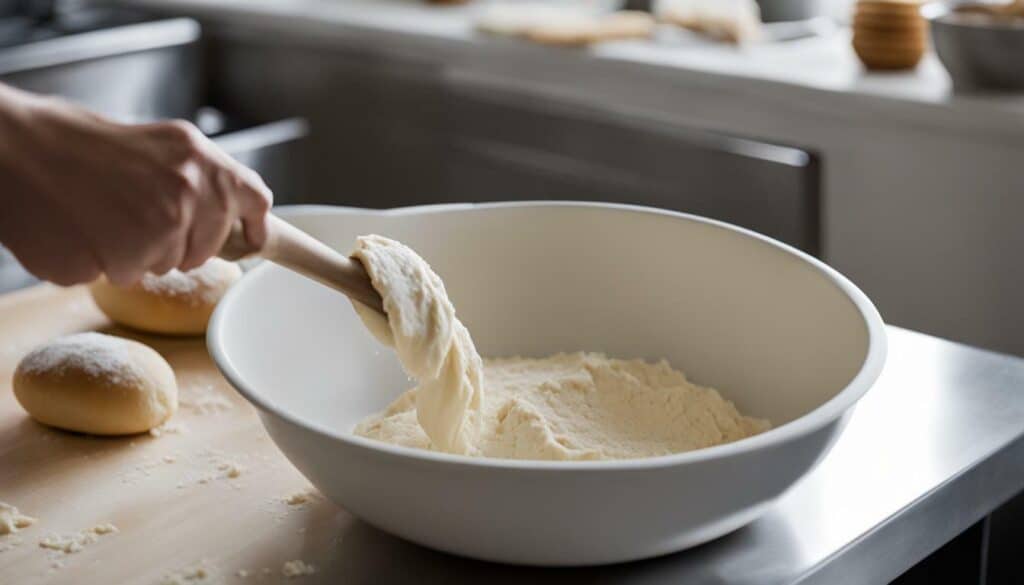
A dough hook is versatile and can be used for various doughs that require stretching, shaping, and ample gluten development. Whether you’re a seasoned baker or just starting to explore the world of dough, incorporating a dough hook into your baking routine can greatly enhance your baking experience.
One of the most common doughs made using a dough hook is bread dough. From classic baguettes to hearty whole wheat loaves, the dough hook allows you to easily knead the dough, ensuring proper gluten development for a light and airy texture. Additionally, the dough hook is perfect for pizza dough, giving it the elasticity needed for that perfectly chewy crust.
Pasta dough is another popular dough that can be effortlessly made using a dough hook. Whether you’re making fresh spaghetti, fettuccine, or ravioli, the dough hook will help you achieve the right consistency for easy rolling and shaping. The dough hook can also be used for other doughs such as brioche, cinnamon rolls, and even pretzels, saving you time and effort in the kneading process.
| Dough | Benefits of Using a Dough Hook |
|---|---|
| Bread Dough | – Proper gluten development for airy texture – Saves time and effort in kneading – Consistent results |
| Pizza Dough | – Elasticity for chewy crust – Easy to work with – Uniform texture |
| Pasta Dough | – Consistency for rolling and shaping – Saves time and effort in kneading – Even distribution of ingredients |
| Brioche Dough | – Light and fluffy texture – Easy incorporation of butter – Uniform rise |
So, whether you’re craving a homemade loaf of bread, a delicious pizza, or fresh pasta, a dough hook is your secret weapon in achieving perfect dough every time. The versatility and convenience of this stand mixer accessory make it a must-have for any baking enthusiast.
Tips for Optimal Dough Hook Usage
To achieve the best results, it is recommended to use speed 2 on your mixer when using a dough hook. This setting provides the ideal balance between efficiency and control, allowing the dough to be properly kneaded without being overworked. Whether you’re kneading bread, pizza dough, or pasta dough, speed 2 on your mixer will help you achieve the perfect consistency and texture.
When using a dough hook, it’s important to monitor the dough closely to avoid overmixing. Overmixing can lead to tough, dense, or rubbery dough. Keep an eye on the dough’s progress and stop the mixing as soon as it reaches the desired consistency. Remember, the dough hook is a time-saving tool, but it’s still essential to pay attention to the dough’s development to ensure optimal results.
In addition to speed and monitoring, it’s also crucial to follow the recipe’s guidelines for kneading time. Different doughs require different amounts of time to develop properly. Some recipes may call for longer kneading times, while others may require shorter ones. By adhering to the recipe’s instructions, you can ensure that your dough is perfectly kneaded and ready for the next steps of your baking process.
Additional Tips:
- Always start with the dough hook attachment firmly secured in place to prevent any accidents or damage to your mixer.
- For sticky or wet doughs, it’s helpful to lightly oil or flour the dough hook before use to prevent excessive sticking.
- If the dough seems too dry or stiff during mixing, you can add small amounts of water or liquid ingredients, a tablespoon at a time, until the desired consistency is achieved.
| Speed Setting | Kneading Time (approx.) |
|---|---|
| Speed 2 | 5-7 minutes |
| Speed 4 | 3-5 minutes |
| Speed 6 | 1-3 minutes |
Remember, practice makes perfect when it comes to using a dough hook. Experimenting with different dough recipes and adjusting the speed and kneading time accordingly will help you become more familiar with the process and achieve consistent, delicious results in your baking.
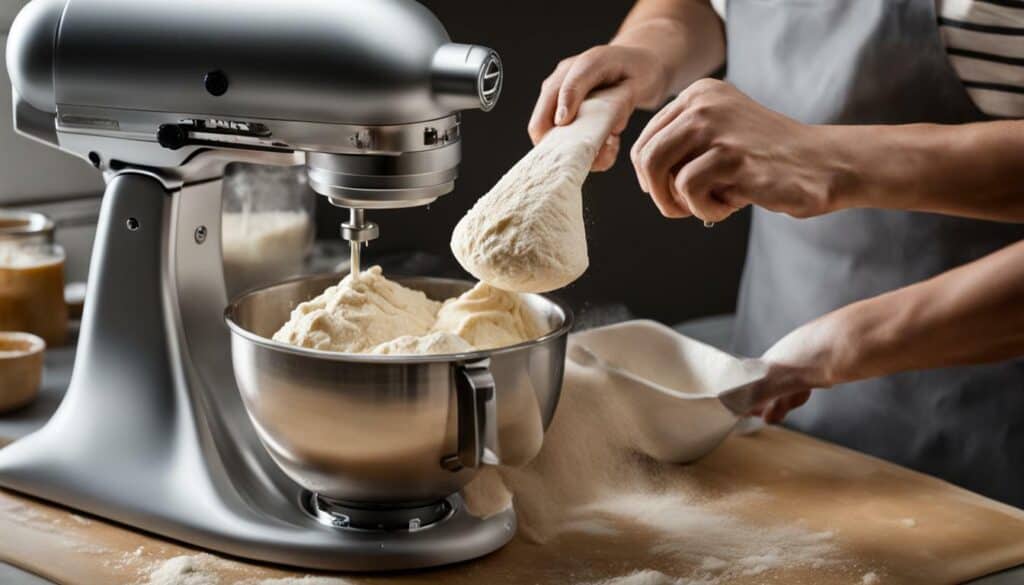
The kneading time when using a dough hook can vary depending on the specific recipe you are following. It is crucial to find the right balance between under-kneading and over-kneading to achieve the desired texture and structure of your dough. Under-kneading may result in a dense and poorly developed dough, while over-kneading can lead to a tough and chewy end product.
As a general rule of thumb, it is recommended to start with the minimum kneading time suggested in your recipe and then gradually increase if necessary. Keep a close eye on the dough’s consistency and appearance throughout the kneading process. The dough should be smooth, elastic, and spring back when lightly pressed with your fingertips. This indicates that the gluten strands have developed properly.
To ensure optimal results, it is essential to follow the recipe instructions carefully. Some recipes may specify an exact kneading time, while others may provide visual cues or describe the desired dough texture. Additionally, factors such as the type of flour used, hydration level, and ambient temperature can also affect the kneading time.
Experimentation and practice will help you become more adept at determining the ideal kneading time for different types of dough. Over time, you will develop a feel for when the dough is adequately kneaded and ready for the next step in your baking process.
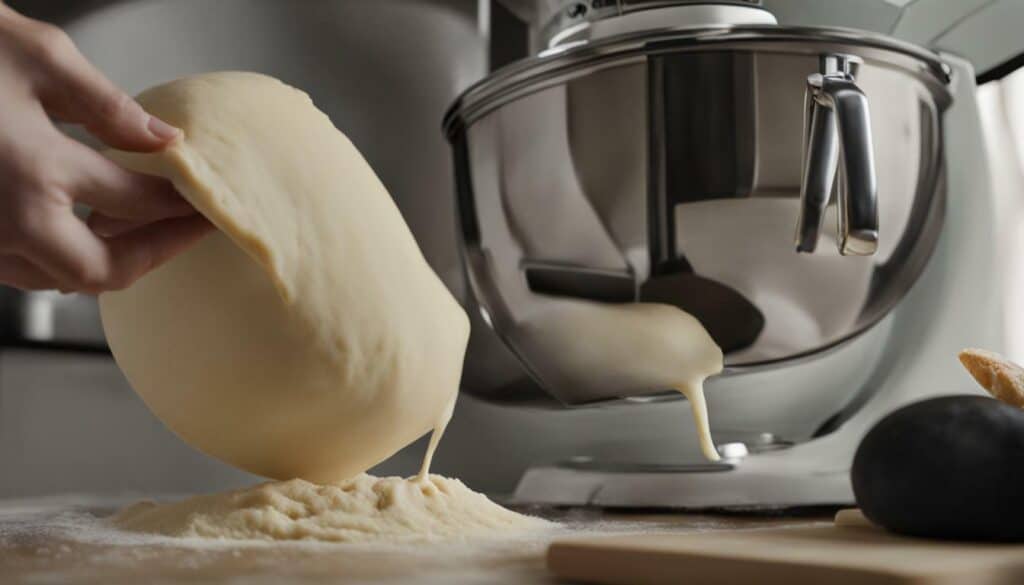
| Type of Dough | Recommended Kneading Time |
|---|---|
| Bread Dough | 10-15 minutes |
| Pizza Dough | 5-10 minutes |
| Pasta Dough | 5-8 minutes |
| Pastry Dough | 2-3 minutes |
Remember, practice makes perfect when it comes to mastering the kneading time. Enjoy the process, experiment with different techniques, and embrace the convenience and efficiency that a dough hook brings to your baking endeavors.
Conclusion
The dough hook is an indispensable tool for any avid baker, revolutionizing the way we knead dough and opening doors to endless baking possibilities. Whether you’re a seasoned pro or just starting out on your baking journey, incorporating a dough hook into your arsenal will greatly enhance your baking experience.
With its ability to effortlessly knead bread and pastry doughs, the dough hook saves time and reduces physical effort, making it a must-have for every home baker. By utilizing the unique functionalities of the C-shaped or spiral dough hook, you can achieve perfectly kneaded dough with ease.
From fluffy homemade bread and crispy pizza dough to delicate pasta dough and more, the dough hook can handle a wide range of dough types, allowing you to experiment and create delicious baked goods. Its versatility and practicality make it a valuable companion in your baking endeavors.
When using a dough hook, it’s recommended to start at speed 2 on your mixer for the best results. The kneading time will vary depending on the recipe, so be sure to follow the instructions provided. Remember, mastering the kneading time is key to achieving the desired texture and consistency in your dough.
So, whether you’re a fan of kneading by hand or looking for a more efficient way to tackle your dough, the dough hook is here to help. Embrace the convenience and effectiveness of this powerful tool, and elevate your baking game to new heights!
FAQ
Q: What is a dough hook used for?
A: A dough hook is used for kneading bread and certain pastry doughs with a stand mixer.
Q: What are the types of dough hooks available?
A: There are two types of dough hooks: C-shaped and spiral.
Q: How does a C-shaped dough hook work?
A: The C-shaped dough hook kneads by pushing the dough against the sides of the mixing bowl.
Q: How does a spiral dough hook work?
A: The spiral dough hook pushes the dough off the bottom of the bowl.
Q: What are the benefits of using a dough hook?
A: Using a dough hook helps in developing gluten strands and makes kneading dough easier and faster.
Q: What doughs can be made with a dough hook?
A: A dough hook can be used for making bread, pizza dough, pasta dough, and other doughs that require stretching and shaping.
Q: How should I use a dough hook for optimal results?
A: It is recommended to use speed 2 on the mixer for best results, and the kneading time will vary depending on the recipe.
Q: Can a dough hook reduce physical effort and time required for kneading?
A: Yes, using a dough hook reduces the physical effort and time required for kneading compared to kneading by hand.
Q: What is the purpose of the dough hook in a stand mixer?
A: The purpose of the dough hook is to help develop gluten strands and aid in the kneading process.
Q: How does the dough hook work with different types of dough?
A: The dough hook helps in stretching and shaping dough, making it easier to work with various types of dough.
What Are the Original Ingredients of a Punch and How Do They Come Together?
What are the original ingredients of a punch and how do they come together? A classic punch typically includes a combination of five main elements: spirits (like rum or brandy), fruits, sweeteners (such as sugar or honey), citrus juices, and water or a sparkling element. These original ingredients of a punch blend harmoniously to create a refreshing and flavorful drink for gatherings and celebrations.

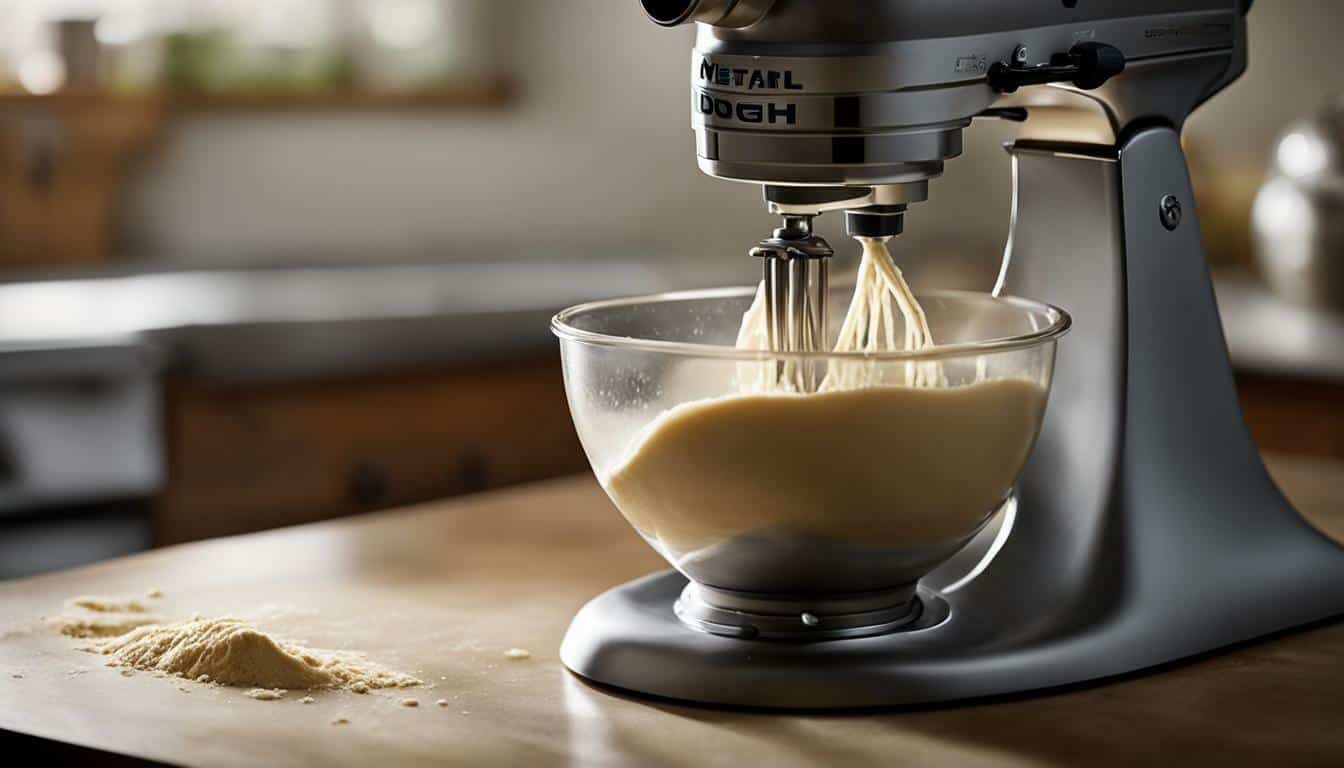
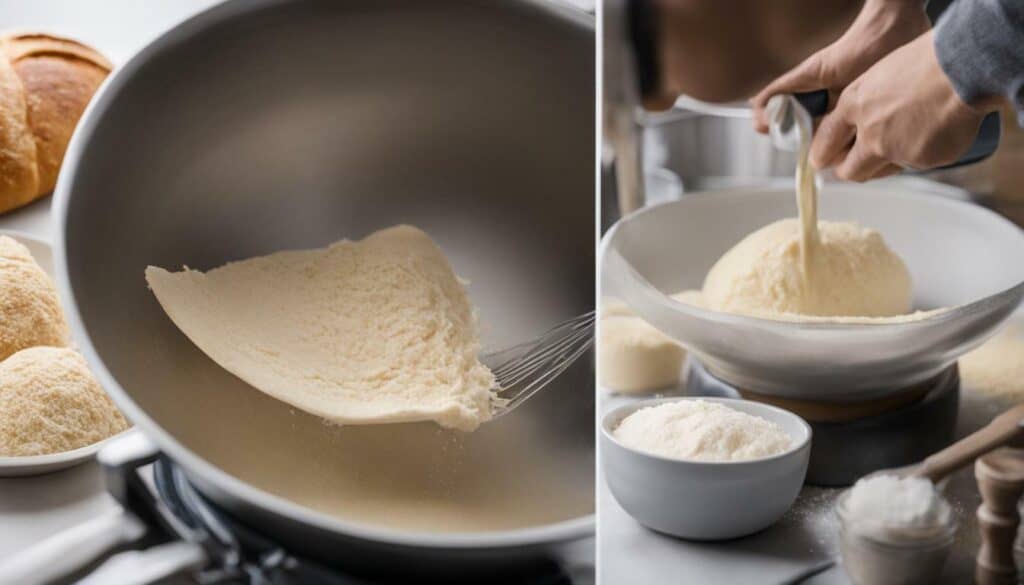
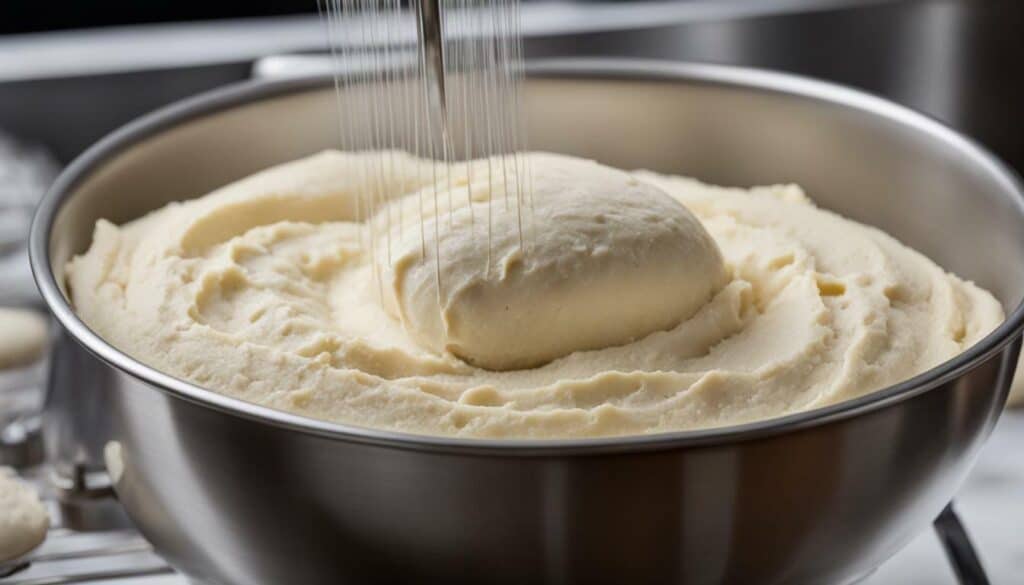



Leave a Reply